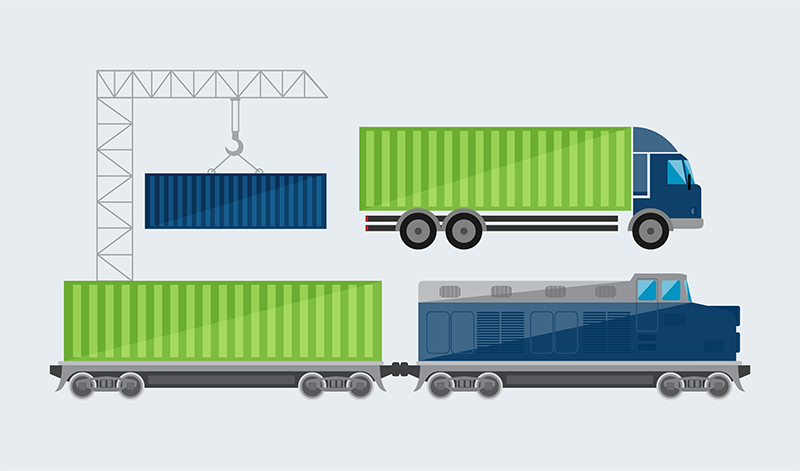Blocking and Bracing Is Fundamental to Keep Cargo Secure
Cargo is subject to subtle but consistent vibrations when shipping by rail. This can cause shifts within containers, both lengthwise from front to back and laterally from side to side. In fact, two-thirds of claims related to cargo damage are caused (or made worse) by poor packing according to TT Club, a transport and logistics insurer.1 The tools and methods companies and shippers use to secure their cargo within the container have a major influence on the safe and successful transport of the product.
Done properly, blocking and bracing strategies can help prevent load shifts during transport. Understanding the basics — and making sure employees are practicing these strategies — goes a long way toward minimizing damage. When it comes to intermodal load planning and securement, please ensure you’re aware of the following:
- Cargo Type and Characteristics
- Weight: Heavier items may need more substantial blocking. It is also important to ensure even weight distribution.
- It varies depending on the container and cargo, so confirm what your specific limitations are and never exceed the maximum gross weight amount.
- Shape and attributes: Irregular or fragile cargo needs tailored solutions.
- Packaging: Different securement strategies are required depending on whether items are unitized or loose.
- Weight: Heavier items may need more substantial blocking. It is also important to ensure even weight distribution.
- Blocking and Bracing Materials
- Lumber: Standard wood blocks/braces need to meet strength and size specifications (per AAR guidelines).
- Dunnage bags: Often used in containers, they must be rated for the weight and void size.
- Void fillers: Fill space to minimize movement — critical in mixed cargo.
- Load Plan and Documentation
- A detailed load diagram can assist with even weight distribution, prevent misloads, and clarify blocking/bracing requirements.
- Extremely concentrated weight can cause a floor failure in the shipping container.
- It’s vital to prevent extreme pressure on the doors, walls, and ends of the container.
- Properly document and photograph load securement for liability purposes.
- A detailed load diagram can assist with even weight distribution, prevent misloads, and clarify blocking/bracing requirements.
- Education, Training, and Regulatory Compliance
- Shipper’s responsibility: Anyone involved in loading intermodal freight must be trained in railroad-specific forces and securement techniques. If you load it, you have the responsibility — this includes safe loading under Shipper’s Load and Count (SL&C) terms.
- AAR compliance: Understand and apply the Association of American Railroads (AAR) loading and securement requirements. These are mandatory for rail shipments and are designed to reduce in-transit damage and safety risks.
- Railroad terms and liability: Familiarize yourself with each railroad’s specific terms and conditions. These can impact liability, claim recovery, and approval to move certain commodities.
A load shift identified by the rail carrier that requires rework can cause shipping delays, and freight damage may lead to outright rejection by the consignee. Understanding correct blocking and bracing components not only helps your shipment arrive on time and undamaged, but it also protects other freight on the train and within railroad terminals. Additionally, documenting that proper blocking and bracing procedures were followed can reduce your liability if a damage claim is filed with the railroad.
While blocking and bracing can be complex, Genex is here to help. Customers lean on our shipping experts to ensure their cargo aligns with the latest guidelines. We will work with our railroad partners to develop load plans for proper weight distribution specific to your shipment so you can rest assured that everything is done correctly, leaving you more time to focus on what you do best: manufacturing your product.
Additional Resources
BNSF: https://www.bnsf.com/ship-with-bnsf/intermodal/pdf/larsibumanual.pdf
CSX: https://www.intermodal.com/index.cfm/resource-center/information-kits/blocking-bracing/
Union Pacific: https://www.up.com/customers/shipment_quality/intermodal/blocking_bracing/index.htm




